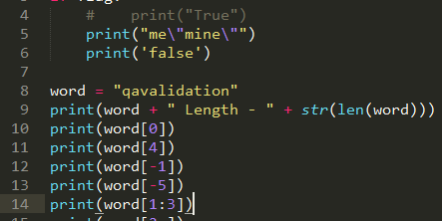
- #HOW TO CONFIGURE SUBLIME TEXT FOR PYTHON HOW TO#
- #HOW TO CONFIGURE SUBLIME TEXT FOR PYTHON .EXE#
- #HOW TO CONFIGURE SUBLIME TEXT FOR PYTHON CODE#
Select the version of your OS system and follow the installation instructions. If you haven’t already done this, you can download Python from. You also need to have Python set up on your computer.
#HOW TO CONFIGURE SUBLIME TEXT FOR PYTHON .EXE#
exe file to complete the installation process. Step 1: Download Sublime Text and have Python set up on your computer

#HOW TO CONFIGURE SUBLIME TEXT FOR PYTHON HOW TO#
How to set up Sublime Text for Python development In a way, packages can be seen as extensions that are pluggable into Sublime to perform whatever task you want.

#HOW TO CONFIGURE SUBLIME TEXT FOR PYTHON CODE#
This includes plugins, syntax highlighting customization, menus, and code snippets. The highlight for Sublime Text is the ability to extend the current functionality with a thing called Packages. Sublime Text comes with a core set of rich features such as key bindings, indentation preferences, spell checks, multi-select, and file patterns. You don’t need to worry about accidentally editing the wrong files when you’ve got more than a dozen files open. Sublime Text preserves your open projects and keeps them separated from each other. Some IDEs and code editors only allow for one project at a time. The separation can come in handy when you’re referencing multiple codebases. Instead, it opens up a completely new window for you to arrange as you wish on your screen. Opening up a new project won’t close your current project either. Sublime Text’s beauty lies in its minimalist approach, showing only what is necessary, which gives you the space to focus on your code. With many IDEs, you’re bombarded with options galore, with side and bottom panels that often take up screen real-estate. Sublime Text’s interface is one of the cleanest interfaces for a code editor. You can close Sublime Text safely and know that everything will return to you intact and without any glitches. So there’s no worry about low laptop battery or panic when Windows randomly forces you to restart mid-way through your work. Not only that, it opens and leaves exactly where you left off - including unsaved changes and code that may have been lost with any other editor.

Unlike other IDEs that may take a bit of time to boot up and maybe bombard you with a few welcome messages and multi-tabs of text about the editor each time you boot it up, Sublime Text just opens. It only takes three words to sum up the awesomeness of Sublime Text for Python and they are speed, interface, and customization. Why use Sublime Text for Python development? You might even say that Sublime Text is the best code editor to understand Python because it is part Python.īut why, exactly, should you use Sublime Text for Python development? Why? Because it’s written in C++ and Python. It is great for new and seasoned developers alike, with features like multi-tab select, git integration, key bindings, file patterns, and a native command-line interface to make your workflow more efficient.On top of this, visual customizability allows the developer to create, import, and edit Sublime’s interface themes and color schemes.īy default, you can use it for any programming language - but its Python support is considered one of the best. Sublime Text Editor has been around since 2008 and has remained one of the most intuitive, free, and feature-packed code editors on the market.


 0 kommentar(er)
0 kommentar(er)
